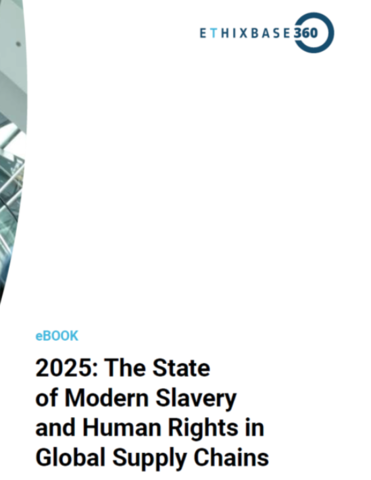The top five supply chain planning myths
Sponsored by KinaxisLightning never strikes twice, peanuts are a type of nut and bats are blind. Like those false assumptions, there are supply chain planning myths that have persisted long after they’ve been proven untrue

After one of the most tumultuous and disruptive periods in recent history, many
companies have had to face reality: historical supply chain planning approaches have proven inadequate against new challenges. Functional optimisation and incrementalism will not deliver the required resiliency and agility. The good news? Pioneering executives, supply chain leaders and practitioners around the world have recognised that a new governance model, based on end-to-end concurrent planning, is now available to optimise businesses. Companies big and small are moving from Excel spreadsheets to advanced planning in 12 weeks or less.
Why now is the time to adopt end-to-end concurrent planning:
- Clear corporate benefits
Companies can see both supply chain benefits such as inventory reductions, accelerated sales and operations planning and improved customer experiences in addition to financial benefits such as improved cash flows.
They see return on investment in times of stability and disruption, outperforming industry averages on revenues and stock prices while achieving higher returns on assets, sales and invested capital.
- Rapid time-to-value
New programmes and methodologies can provide concurrent planning, visibility and transparency in production environments – not proofs of concept – in 12 weeks or less.
By right-sizing the start, companies can achieve benefits earlier, accelerate adoption and payback, and grow and streamline change management at their own pace.
- Proven
The technology to power concurrent planning is available and validated by the market. Kinaxis is a leader in the 2021 Gartner Magic Quadrant for Supply Chain Planning Solutions. Its RapidResponse® solution is trusted by a vast community of top supply chain innovators, big and small, across the globe. We believe partnering with a recognised leader reduces deployment risk.
Supply chain myth #1: increasing accuracy is more important than increasing agility
The right balance of accuracy and agility streamlines day-to-day efficiencies and enables
supply chains to know sooner and act faster when change happens
What Covid-19 and other global disruptions have taught us is that accuracy can only take you so far – especially when the historical data you’re using to create your models can’t be trusted. You need the agility to pivot and respond quickly to what’s happening in the real world.
During the pandemic, 61 per cent of supply chain practitioners dramatically lowered the estimate of their supply chains’ agility when surveyed on a five-point scale by Supply Chain Insights.
However, according to the survey, “companies rated themselves more agile in the pandemic if they were an innovator in analytics, [or] were more balanced in managing S&OP processes.”
Supply chain myth #2: optimising each link independently optimises the whole chain
An improvement on purely technological solutions, this approach simultaneously optimises end-to-end versus siloed metrics and drives breakthrough results. Companies prioritising end-to-end optimisation will see dramatic performance differences compared with their peers, not just at the supply chain level but across the entire business.
Kinaxis customers saw significant differences in performance compared with industry averages. They outpaced peers on key metrics, such as return on assets, return on sales, return on invested capital and asset turnover, according to an analysis of publicly held North American companies conducted by Professor Morgan Swink of Texas Christian University.
During major disruptions such as Covid-19, that gap grew as much as 2.5 times.
With companies such as these setting the standard, it’s no surprise that supply chain planners across the industry recognise the need for cross-functional optimisation and agility. Surveys from Supply Chain Insights and IDC find operational efficiency and end-to-end capabilities top the list of practitioner priorities.
Supply chain myth #3: end-to-end visibility solves collaboration across and between functions
Visibility provides only awareness while transparency adds understanding to make
better decisions. Closing the gaps between functions requires both visibility of what’s happening and the transparency to gain context into the causes, so you can make faster, more confident decisions.
This alignment between functions has always been important, but the pandemic was a catalyst for closing gaps. Supply Chain Insights found that alignment between functions was perceived as important – as high as 92 per cent for S&OP – but actual alignment was low.
Then the pandemic happened, silos dropped and actual alignment increased. However, actual alignment achieved across functions was still lower than its perceived importance even during the pandemic.
Supply chain myth #4: artificial intelligence is a silver bullet for all problems
AI and machine learning (ML) are important in that they help us learn from prior decisions, but they cannot replace human judgment, creativity and ingenuity
Hype around the wonders of AI and how it can lead to lights-out planning is everywhere.
AI and ML do play an important role in helping companies learn from past decisions and
automating routine tasks to free up planners’ time.
But make no mistake: AI is not a replacement for people. It’s a way to enhance their capabilities. Seventy-six per cent of companies at the top 10 per cent of supply chain maturity say they use AI/ML solutions that reduce the time planners spend completing low-value, repetitive tasks.
Supply chain myth #5: improvements require a large and disruptive digital transformation project
Small changes can have massive impact in a short period. You don’t have to complete a full-scale digital transformation to realise significant benefits. Gradual adoption of concurrent techniques works too. If silos affect decision-making which, in turn, affects business outcomes, then even small improvements in visibility have ripple effects.
On an average day, those impacts add up. During a disruption, they become significant. Revenue and stock price, two of the most important metrics for every executive at a publicly held company, were better among Kinaxis customers than industry averages, according to a recent analysis by Professor Swink.
During the pandemic, Kinaxis customers saw a 2 per cent growth in revenue versus a 3 per cent decline for others. Kinaxis customers also saw their stock price increase by three times more than the industry average.
Break free from the myths that have held you back from supply chain planning success
The time to reinvent supply chain planning is upon us. Break free from the status quo with Kinaxis RapidResponse. Our extensive cloud-based platform is the only one on the market capable of delivering true concurrent planning, so you can instantly and continuously balance your end-to-end supply chain. That way, you can embrace volatility, build resilience and focus on what really matters.
Get more value, faster with our secure integration capabilities. Bring together all your internal and external supply chain data sources and connected algorithms, even if you have dozens of enterprise resource planning (ERP) instances across platforms such as SAP or Oracle.
Start from anywhere and grow the way you want: whether S&OP/IBP, demand, supply or inventory, you decide. RapidResponse is easily scalable and delivers the capabilities you need to grow and succeed.
Focus on what really matters and leave the repetitive, low-value activities to the machines. Our automated intelligence uses techniques such as AutoML and robotic process automation to improve your supply chain’s performance and keep it operating in top health.
If you can dream it, you can build it. Use Kinaxis to run one or more of our customer-proven planning applications. Or build your own custom apps and embedded algorithms. We give you the flexibility to create the supply chain you want, either with or without code, using our developer capabilities.
Join Kinaxis CEO John Sicard as he debunks some of the most common supply chain planning myths and explores how the breakthrough technique of concurrent planning can help you maximize the potential of your business now.

Business Reporter Team
Most Viewed
Winston House, 3rd Floor, Units 306-309, 2-4 Dollis Park, London, N3 1HF
23-29 Hendon Lane, London, N3 1RT
020 8349 4363
© 2024, Lyonsdown Limited. Business Reporter® is a registered trademark of Lyonsdown Ltd. VAT registration number: 830519543





